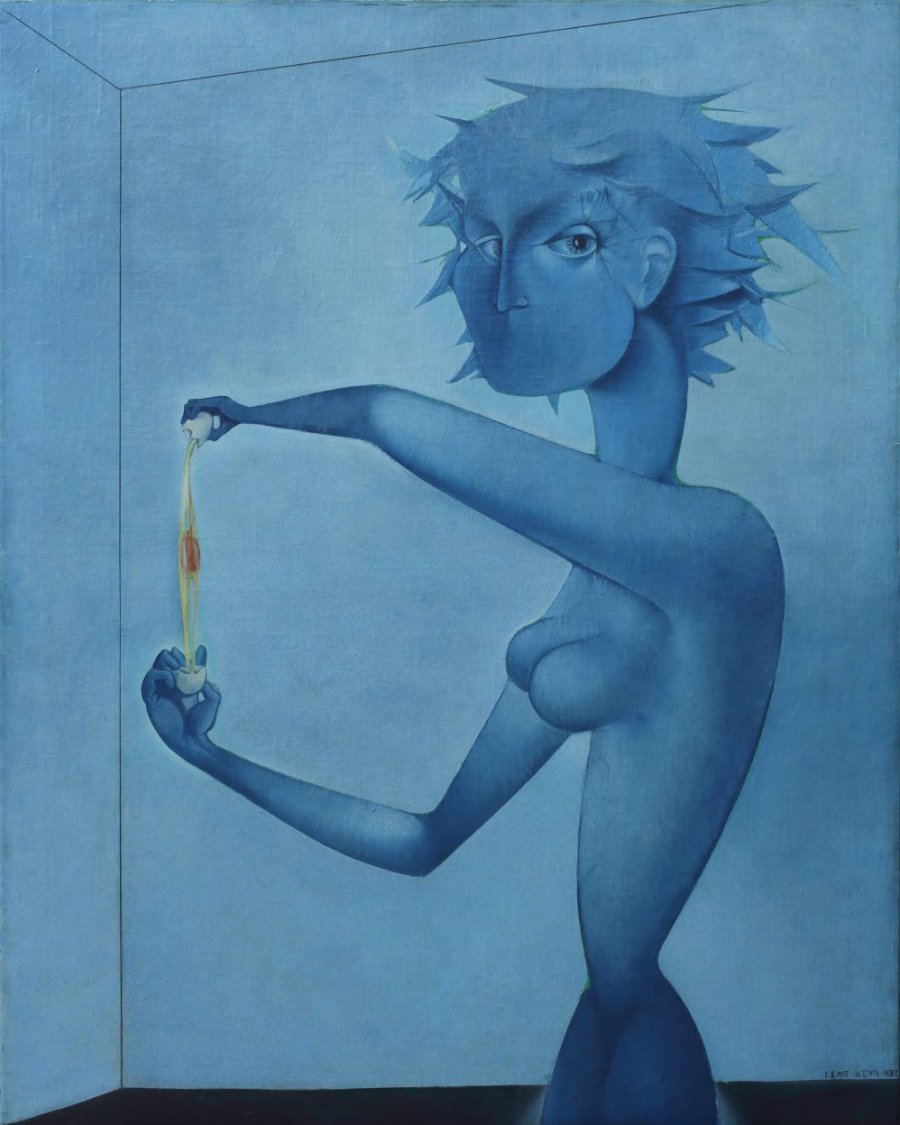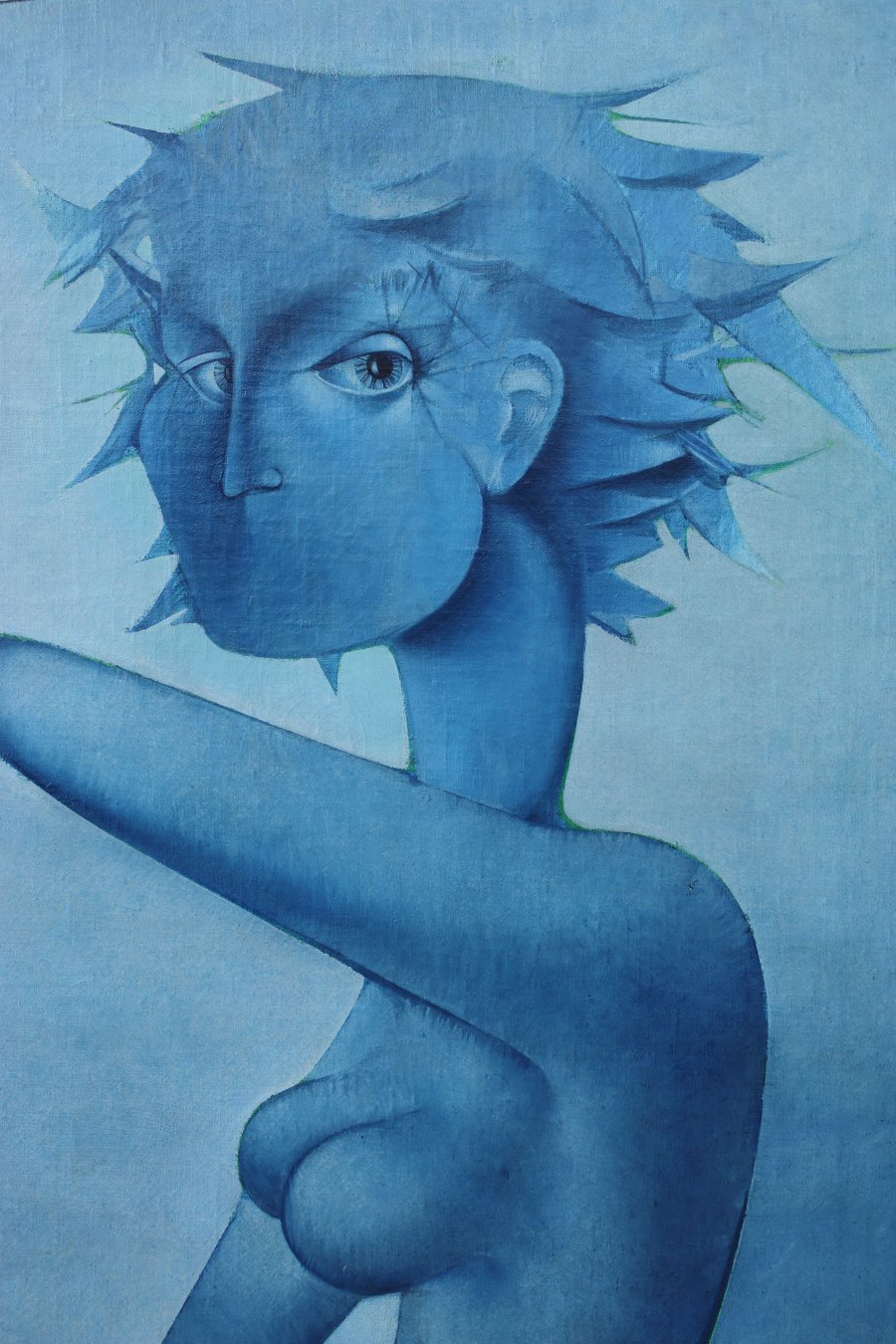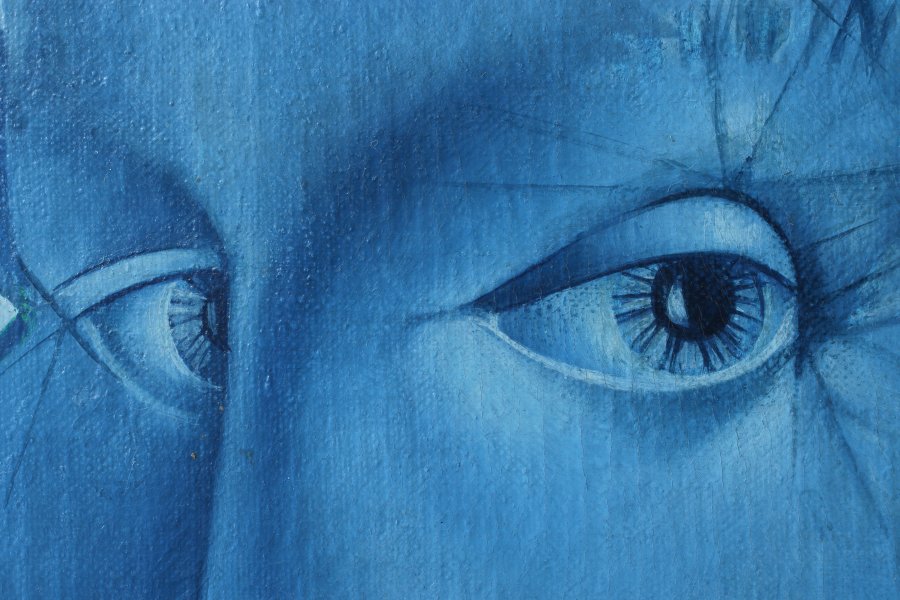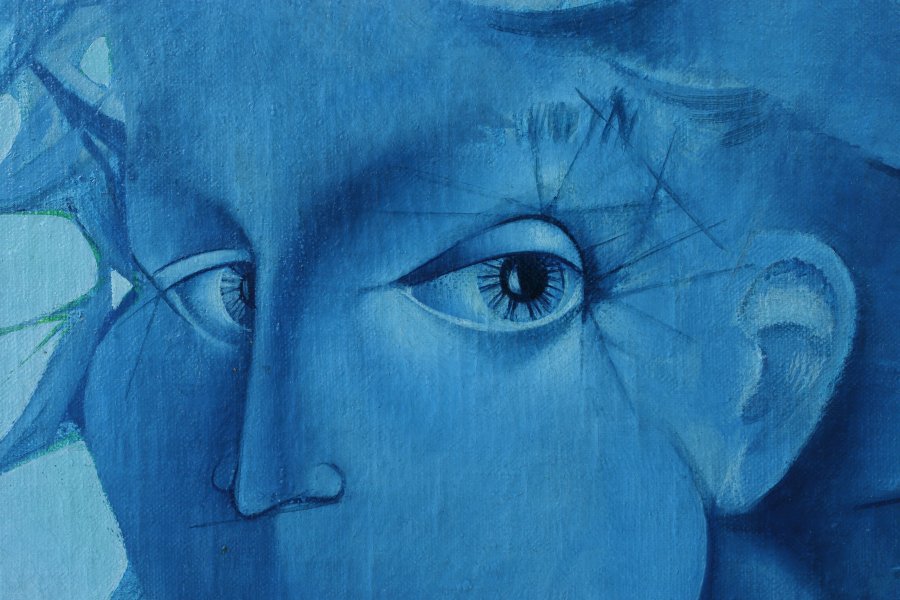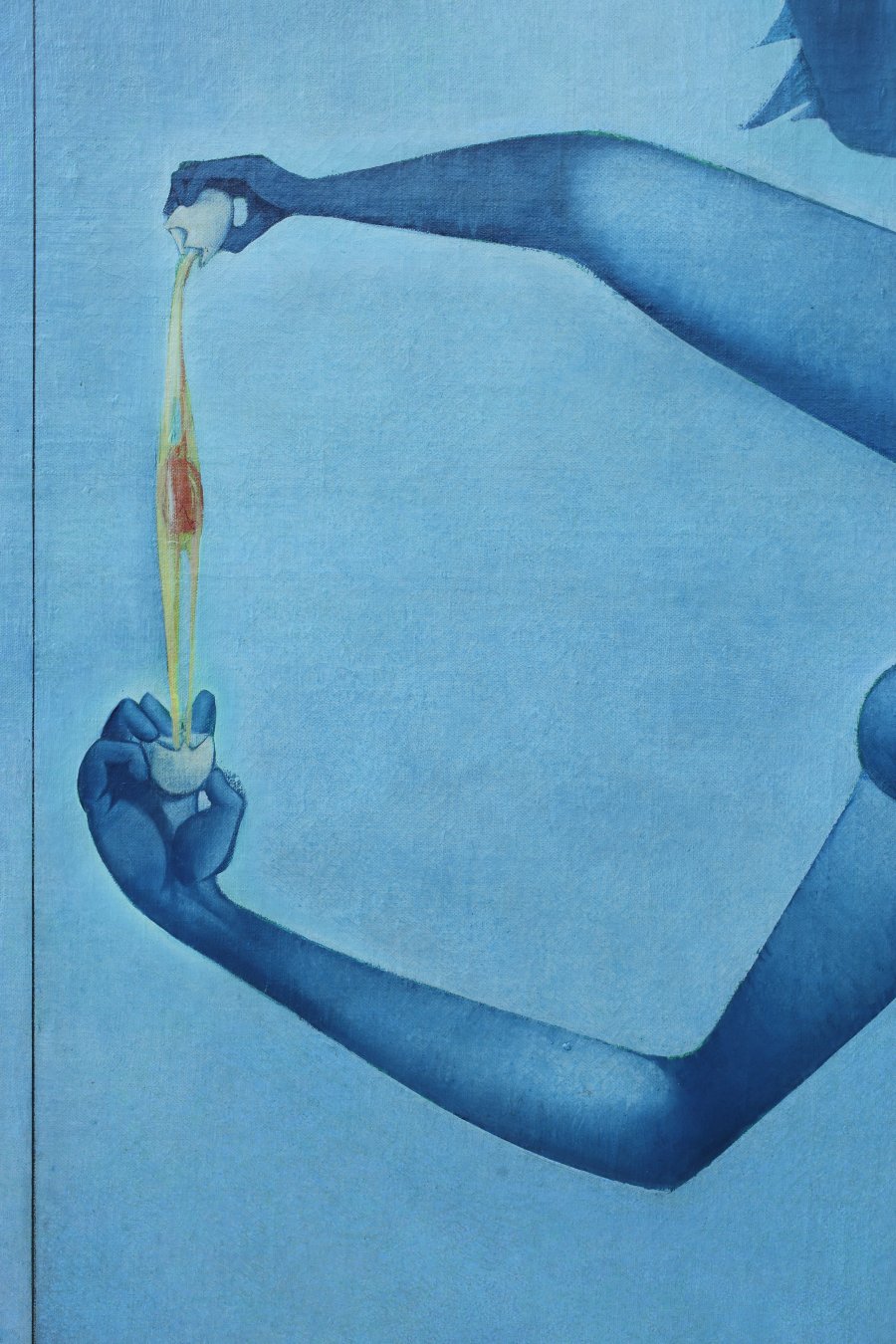Lot 113
ACTION I (Egg)
1955-1956
Egg tempera and oil on canvas
116 x 93 cm (h x w)
Signed lower right: "I.X.1955 - 10.II.1956 - MEDEK"
| 313 725 €
| 1 803 922 €
Painter Mikuláš Medek occupies a leading position in Czech post-war art due to the original expression, profound meaning, and unique spirituality of his work. He also proved his artistic independence and spiritual dimension during the communist regime, which was a harsh adversary of modern art and free thought. In each of his early paintings he addresses new, deep problems that border on questions of life itself, with a style building on pre-war Surrealism that is assisted by the extremely precise descriptiveness of the objects depicted and the narrative accentuating the emotional impact on the viewer, creating an imaginative space and developing the popular medieval concept of the painting-within-a-painting. He builds the composition from several seemingly independent objects connected with differing actions that he occasionally undertook with his wife, Emila Medková, and reflected the artist's physical states and psychoanalytical thoughts. His characters are set in empty, tight spaces delineated by orthogonal and transversal lines; his own style of Mannerist, puppet-like figures are executed with exact outlines. In Medek’s work, the deformation of the original concrete model is attached to feelings of feverish hallucinations, with elongated hands, expanded heads and hair stylized into flat barbs. Medek believed blue and red were the only absolute colors: “Colors are perfect when they are made out of metal – blue out of iron and silver, red out of gold.”
In 1955 he started to paint his Action series from a larger series of paintings titled Naked in Thorns, which Ludmila Vachtová described the following year in an article in Tvar magazine; her text represents the first information published about Medek’s work: “Now he is concerned with expressing the conflict that arose by placing today’s man in the world, with creating a sort of modern mythology that has been constrained at times and is now permeating into symbolism, but is impressive for its sense of urgency. This symbolism is not the pretext, but the result of a new view of the most commonplace actions that are the most mechanized in our lives, ones that have become stereotyped. Because the painter has discovered conflict within them, they have the strength to become mythologies. His view can be interpreted as narrow and one-sided, but you cannot deny its right to exist. If we say humankind, world and life, we cannot exclude from this group the anxiety of mankind, anxiety from the things, situations and relationships that surround him and often bury him.”
A painter, illustrator and writer born to a well-known intellectual and artistic family (grandson of the painter Antonín Slavíček, son of writer and General Rudolf Medek, and brother of Ivan Medek), Mikuláš Medek attended the State School of Graphic Design, attended Vlastimil Rada's studio and the Academy of Fine Arts in Prague, and was a student of František Tichý and František Muzika at the Academy of Arts, Architecture and Design in Prague. He was expelled in 1949. He participated in activities held by the Surrealists (Teige, Effenberger, Fára, Istler, Tikal) and took part in compiling art anthologies, but he was not allowed to work as a professional artist. Initially influenced by the Surrealists, he later became a leading figure of Czechoslovak Art Informel and non-figurative painting. He has created a number of installations for chapels in South Moravia (Jedovnice, Senetářov, Kotvrdovice) and the international offices of Czechoslovak Airlines (including Paris, New York, Damascus, Prague–Ruzyně) and his paintings are represented in public and private collections around the world. His work significantly overlaps with the photography work of his wife, Emila Medková. The contextual cogency, the magical power of his painterly style, and the spiritual energy emanating from Medek’s oeuvre, as well as its message to younger generations, make Medek one of the most important and most original artists not only on the Czech scene, but in the entire painting world of the mid-20th century. Medek’s work is represented in a number of Czech and international public institutions as well as in private collections.
The last exhibition of the artist’s work was held at the Rudolfinum and the Auditorium of the Academy of Fine Arts in Prague; the National Gallery in Prague is preparing a large Medek exhibition scheduled for next year.
Drawing for the painting: Action I Egg, 1955, charcoal, packing paper, 1140 x 780 mm, Olomouc, Museum of Art, inv. no.: Km14636.
Exhibited at: I. Exhibition of Contemporary Czech Visual Artists, Prague, Charles University Faculty of Arts 1958, cat. no. 23| Mikuláš Medek: Obrazy 1947–1965 (Paintings 1947–1965), Prague, New Hall Gallery 1965, cat. no. 5| listed in the exhibition catalogue Mikuláš Medek, Hradec Králové Regional Gallery 1969, cat. no. 23, not exhibited | Mikuláš Medek: Souborné malířské dílo (Collected Oeuvre), Brno, Brna House of Arts – Prague City Library 1990, not listed in the catalogue, exhibited in Prague.
Reproduced in: Tvar, vol. 8, no. 9, 1956, p. 281, fig. 775| Svobodné slovo, 22 March 1958| Výtvarná práce, vol. 13, no. 8, 17. May 1965, p. 5| Mikuláš Medek: Obrazy 1947–1965 (Paintings 1947–1965), Union of Czechoslovak Visual Artists 1965, cat. no. 5| Mikuláš Medek, Hradec Králové Regional Gallery and Art Centrum Prague 1969, cat. no. 23| Bohumír Mráz: Mikuláš Medek, Obelisk, Prague 1970, fig. 28, reproduced in color | Mikuláš Medek: Souborné malířské dílo (Collected Oeuvre), Brno, Brna House of Arts 1990, reproduced b&w| BOX, no. 3, January 1993, back cover, mirror inverse on front cover | Mikuláš Medek: Texty, Torst 1995, p. 280, reproduced b&w | Umění, vol. 45, no. 5, 1997, p. 489–500| Mikuláš Medek, Gema Art, Prague 2002, p. 43| Analogon, no. 38–39, 2003, p. 25.
More works from auction
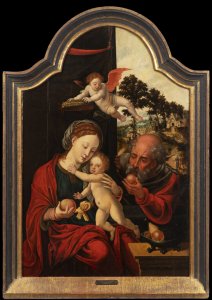
Lot 1 THE HOLY FAMILY WITH AN ANGEL
Starting price450 000 CZK | 17 647 €
Price realized
500 000 CZK | 19 608 €
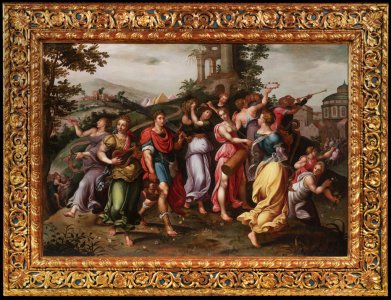
Lot 2 DAVID RETURNING IN TRIUMPH WITH THE HEAD OF GOLIATH
Starting price320 000 CZK | 12 549 €
Price realized
320 000 CZK | 12 549 €
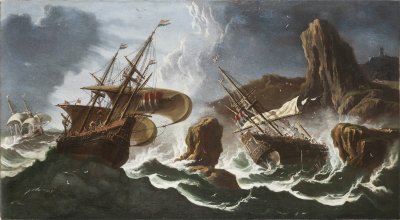
Lot 3 STORM AT SEA
Starting price150 000 CZK | 5 882 €
Price realized
150 000 CZK | 5 882 €
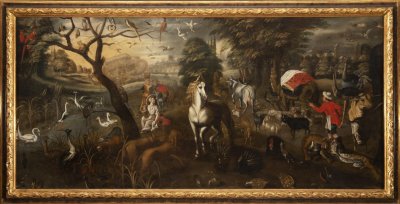
Lot 4 NOAH'S ARCH
Starting price130 000 CZK | 5 098 €
Sold
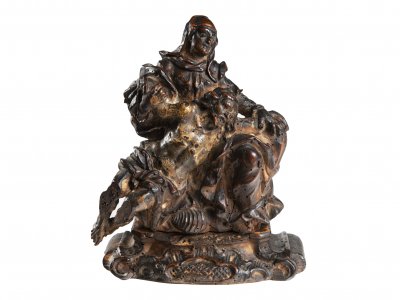
PIETÀ
68 000 CZK | 2 667 €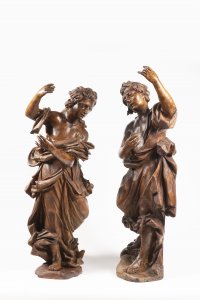
Lot 6 A PAIR OF WOODEN STATUES
Starting price80 000 CZK | 3 137 €
Price realized
90 000 CZK | 3 529 €
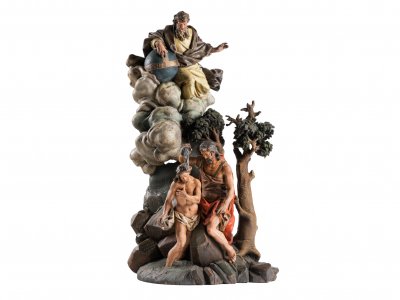
THE BAPTISM OF CHRIST
350 000 CZK | 13 725 €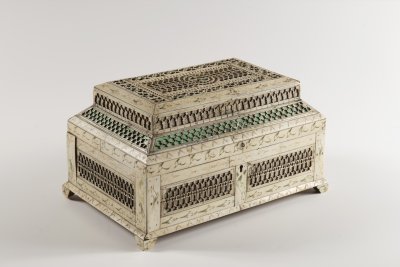
Lot 8 A BOX
Starting price18 000 CZK | 706 €
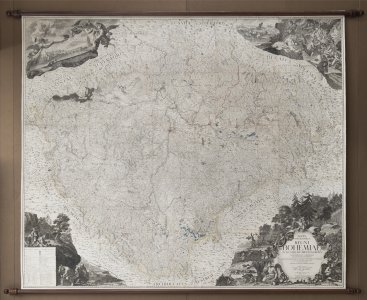
Lot 9 MAP OF THE KINGDOM OF BOHEMIA
Starting price130 000 CZK | 5 098 €
Price realized
160 000 CZK | 6 275 €
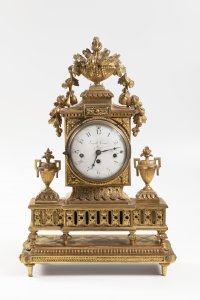
Lot 10 A NEOCLASSICAL CLOCK
Starting price25 000 CZK | 980 €
Price realized
46 000 CZK | 1 804 €
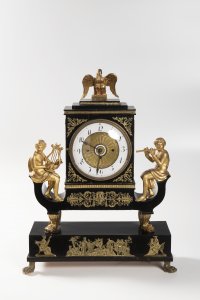
Lot 11 AN EMPIRE CLOCK WITH MUSIC BOX
Starting price30 000 CZK | 1 176 €
Price realized
35 000 CZK | 1 373 €
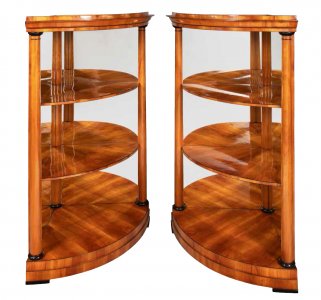
Lot 12 A PAIR OF BIEDERMEIER ETAGERES
Starting price120 000 CZK | 4 706 €
Price realized
150 000 CZK | 5 882 €

